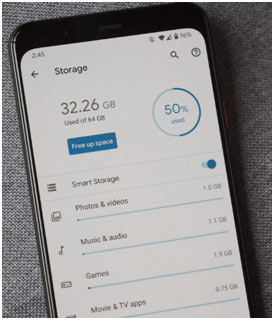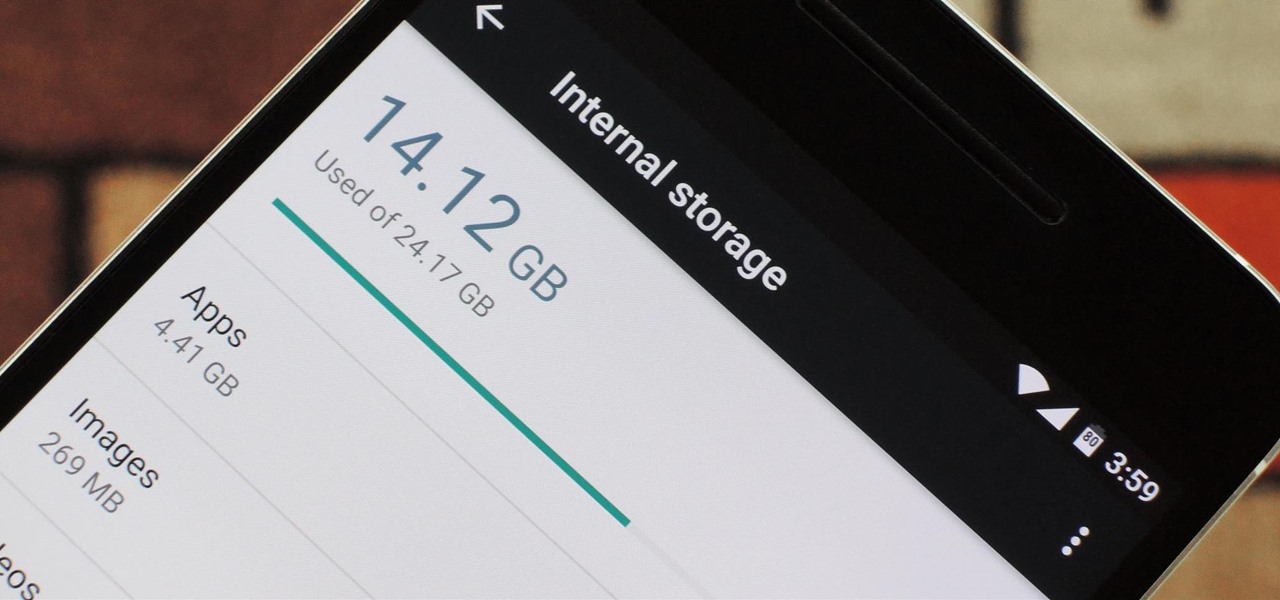
Just as you’re about to pre-order that brand spankin’ new Nexus 7, you have to make the decision. Are you going to get the 8GB version for $199 or upgrade to 16GB for $249?
If you find that your Android device is having insufficient storage available, one of the best solutions is to move some large files including photos, videos, audios, etc. To your computer so as to free up Android storage. To do this, you need a piece of third-party data transfer tool. Tutorials and Guides; 10 tips to help you free up space on your Android device. A collection of some truly useful tips on how to free up space on your smartphone or tablet without running the risk of deleting important files. Depending on your phone and version of Android, you can also move apps to the SD card to free up space. Users with Android Marshmallow and above can do this by formatting the SD card as internal storage. Then, the SD card will be seen as local storage on that device. To free up space on your Android phone or tablet, you can start by clearing your cache and deleting any apps you don't need. You should also delete unwanted files and photos, or transfer them to. There is a “Storage” section in the settings on every Android device that gives you information about what is taking up storage space. This section can also be used to free up space. On your Android phone or tablet, swipe down from the top of the screen once or twice, then tap the Gear icon to open the “Settings” menu.

Coming from a guy that doesn’t carry a whole hard-drive of music around, the choice was easy. I went straight for the 8GB model and sprung for that sweet dark grey cover. But let’s say you’re a music junky and like to download all of the top new movies, apps, and games. The 8GB on the base Nexus 7 model can get crowded fast, and unfortunately, there’s no SD card slot to extend the storage.
There are a few steps you can take to get some extra space on your brand new tablet, though. Check’em out below. Also, these steps don’t only apply for Nexus 7 users. All of these suggestions will work on any Android device.
1. Getting rid of old pictures and videos

Sure, that picture of you throwing up the peace sign with your friends was funny two years ago. But now it’s probably just taking up anywhere from 1 to 10MB of space.
Android has always had a great gallery to look at your pictures. Simply pull up the Gallery app and go into the “Camera” folder. To delete multiple pictures at once, long press on any image or video until it is highlighted and a menu appears on your screen. Then, select any other pictures you want to delete. When you are done, click the garbage can icon in the menu and let bygones be bygones.

Of course, the Nexus 7 will only sport a 1.2MP front-facing camera. Therefore, unless you are loading pictures onto it, you won’t be doing too much damage in this department. However, for those of you who use your Android device as your primary camera, this simple clean up can be a huge space saver.
2. Uninstall any app you don’t use
Most people do not realize how many apps that they don’t use they have installed on their devices. This is most likely because some of your apps are hidden in your app drawer behind bloatware and standard pre-loaded apps. To uninstall an app or look for apps to uninstall:
- Go to Settings > Applications or Apps (4.0+).
- Press “Manage Applications”
- On the “Downloaded” tab, click the app that you want to delete.
- Click the “Uninstall” button to remove the app.
3. Keep all of your music on Google Music
How Can I Free Up Space On My Android Phone

Google released Google Music in November of last year. The service allows the users to upload up to 20,000 songs for free. If each of your songs is 7-10MB, that means you can store 136-195 GB of music in Google Music! Even if you don’t have that much music, I am sure that you can already see the benefit of storing your music online.
The only drawback to storing your music online is that whenever you want to listen to your songs, you have to stream them. So if you have a limited data plan or a device that isn’t always connected to the internet, you might not want to follow this route. However, Google has included a nice feature that allows you to choose which songs, artists, and playlists you want to keep local on your device.
4. Check and Delete Your Downloads
Just like on your computer, everything you download is automatically saved in a folder somewhere on your device’s storage. In addition, just because you have already opened the file or installed the APK file, it doesn’t mean the file that you downloaded is deleted. These files are most likely just hogging space in your downloads folder.
Free Up Space On Tablet
To wipe your downloads on any Android 4.0+ device, simply open the “Downloads” app, check all of the files you want to delete and hit the garbage can. If you do not have this app installed on your device, you can plug your device into a computer and delete the files manually. After plugging in your device, all of your downloads should be located in a folder called “Download”. If you are using a mac, Android File Transfer can help you with USB troubles.
Free Up Space On Lg Android Phone
Which of these steps worked best for you? Have any other ways of freeing up space? Let us know in the comments below!




